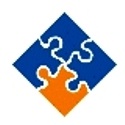Question – Networked Computers Not Sharing The Same Data On Pro 2008 We have 3 networked computers. Some entries aren’t being shared, each computer has different data or a lack of certain data. Omitted customers mainly.
Answer – Select the computer that you know to be hosting the company file.
On that computer, open QuickBooks and confirm that you are hosting multi user access. Go to File >> Utilities. On the text menu, confirm that you have the option "Stop Hosting Multi-User Access…" listed on the menu.
If you do not have "Stop Hosting Multi-User Access…" listed on the menu, then you will need to select File >> Utilities >> "Host Multi-User Access…" After you complete this operation, the computer you selected will now be hosting the company file.
Only one computer can Host Multi-User Access at a time. Consequently, check every other QuickBooks installation and confirm that they are not Hosting Multi-User Access. If they are, turn Hosting Multi-User Access off.
On each computer currently accessing the company file, open QuickBooks, open the company file and then press the F2 key on your keyboard. This opens the Product Information window.
On the product information screen, in the "File Information" section, confirm that both the "Location" the "Server IP" is the same for each computer.
VERY IMPORTANT NOTE: If the information in the "File Information" section is different for one or more computers, you are using different company files in different places. They might even have the same name.
Unless you are very good at locating files and evaluating versions of files with the same names, contact a QuickBooks Pro Advisor to help you through this unfortunate situation. You will need to get back to one company file that contains your business data. You might even require assistance to merge data from multiple company files.
Otherwise, on each of your QuickBooks "client" computers, close the company files then browse to the correct company file on your hosting computer and open the file. Your company file should be located on a network mapped drive using the same drive letter for each computer.
On each of your QuickBooks "client" computers, open the product information screen. In the "File Information" section, confirm that both the "Location" the "Server IP" is the same for each computer.
Carefully enter the "lost data" into your correct company file. Do a backup of your correct company file. Delete any company files located on your client computers.
Are You Ready For QuickBooks Multi User?
Visit painlessquickbooks.com to find out.
